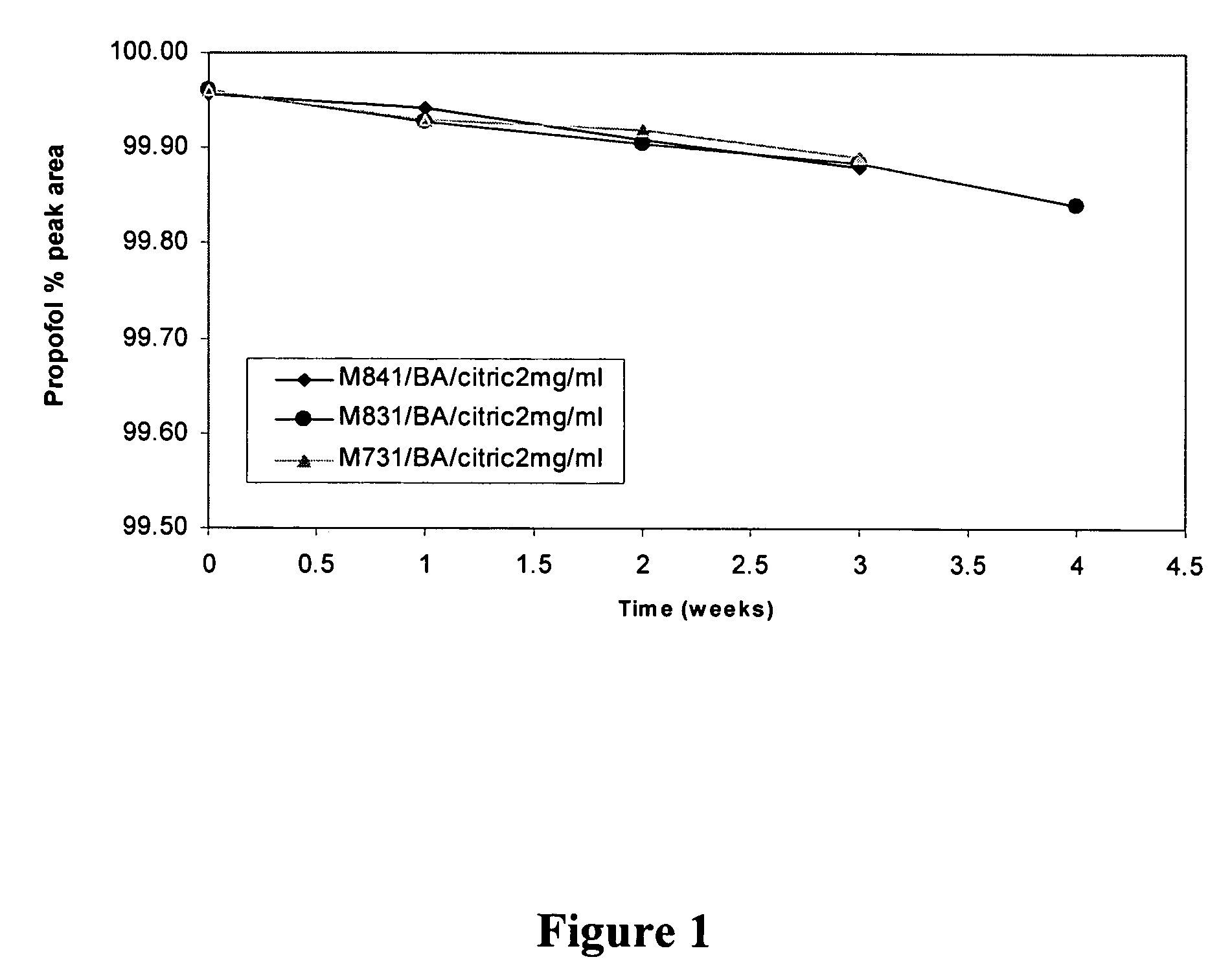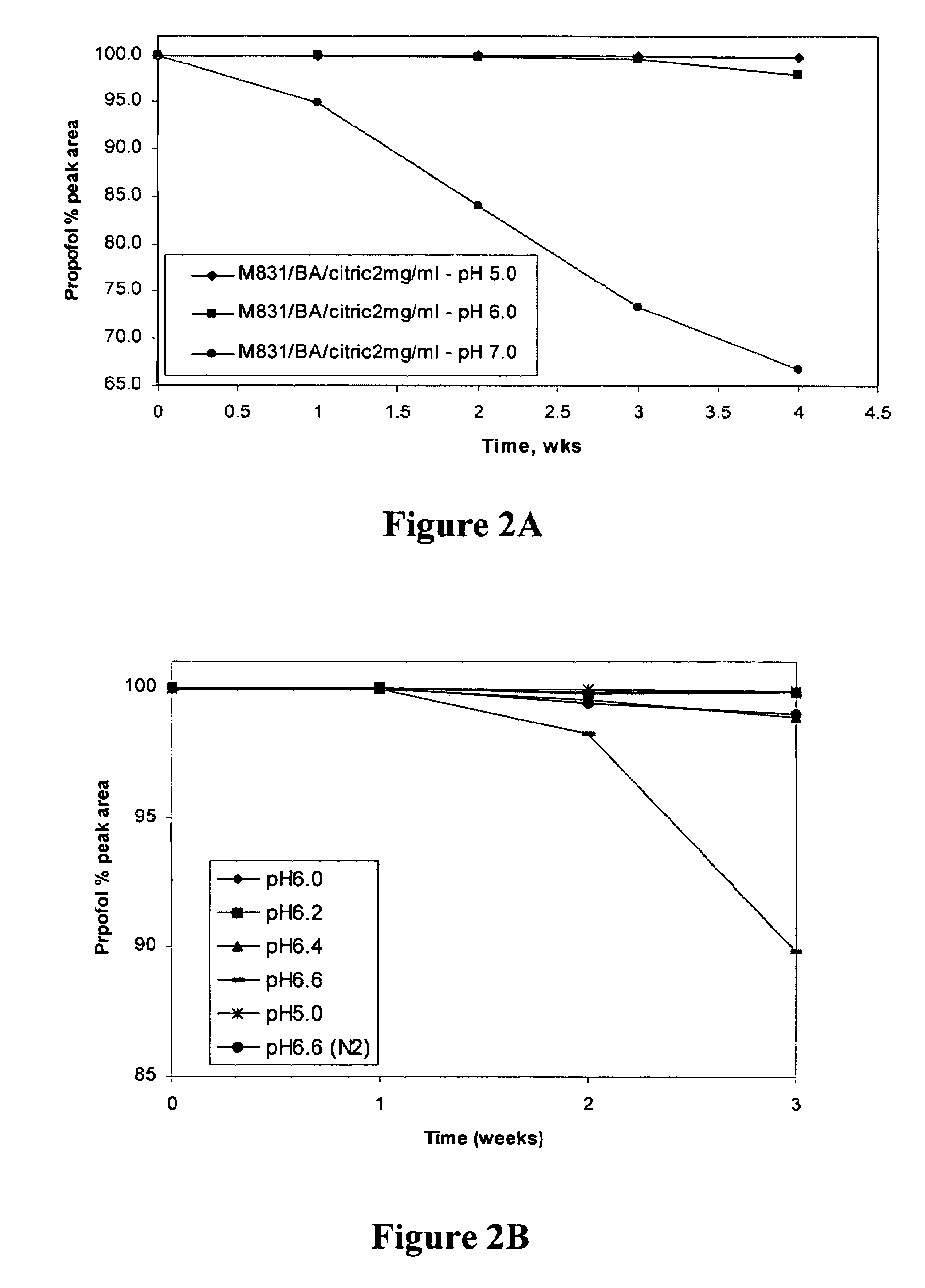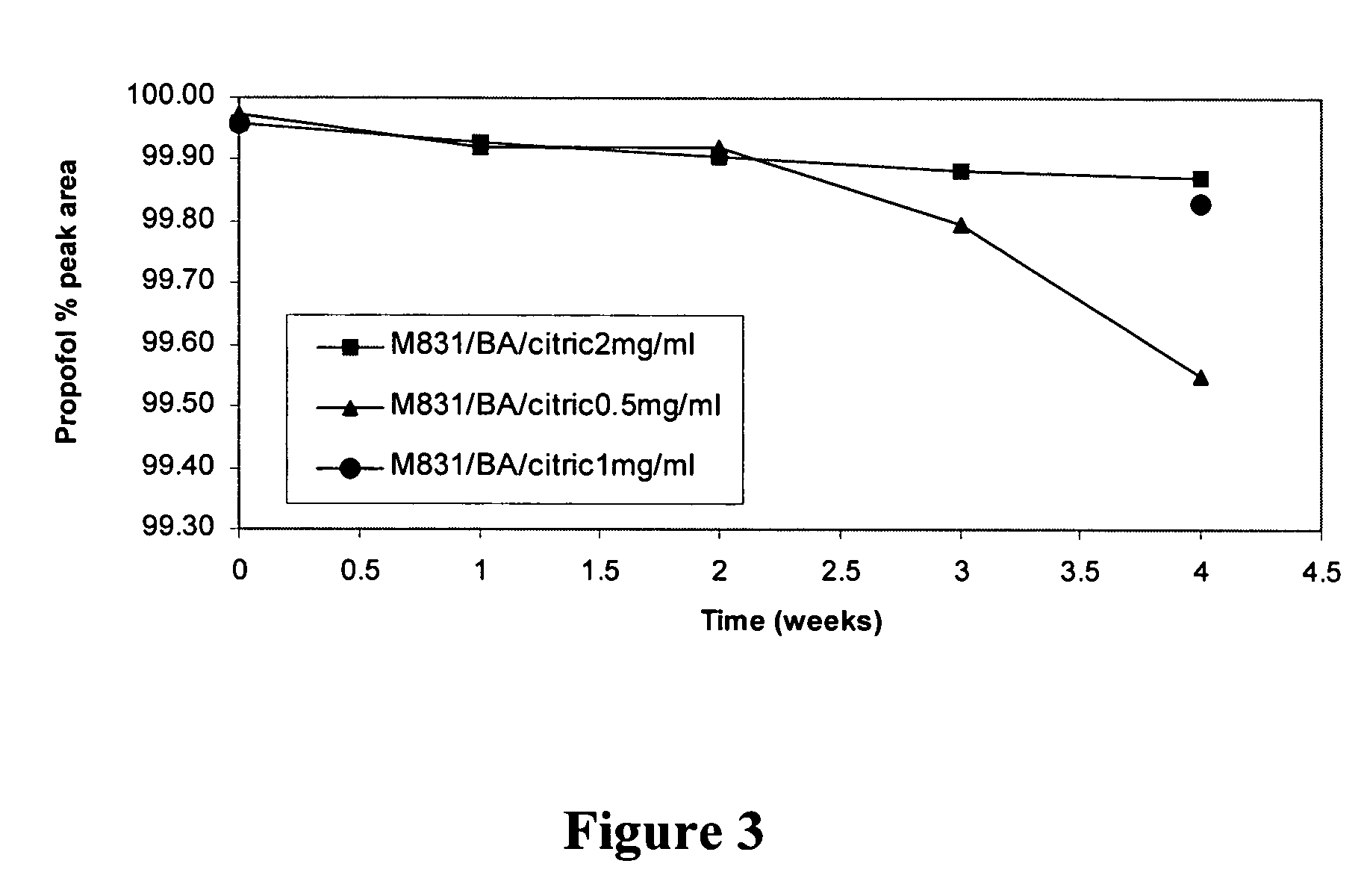Aqueous pharmaceutical compositions of 2,6-diisopropylphenol (propofol) and their uses
a technology of diisopropylphenol and composition, which is applied in the field of aqueous pharmaceutical compositions containing lipophilic therapeutic agents, can solve the problems of undesirable side effects of co-solvents such as ethanol and polyethylene glycol, and the associated undesirable side effects of solutol®, and achieves the effects of convenient storage, convenient preparation and convenient sterilization
- Summary
- Abstract
- Description
- Claims
- Application Information
AI Technical Summary
Benefits of technology
Problems solved by technology
Method used
Image
Examples
example 1
[0182]A propofol containing composition (Formulation C) was prepared as follows. Approximately 500 mg PEG-400, 350 mg PEG-40 stearate, and 35 mg polyoxyethylene 20 sorbitan monooleate were added to a glass vessel. Purified water was added followed by 100 mg propofol. Water was added as necessary to bring the total volume to 10 milliliters. The mixture was stirred at room temperature using a magnetic stirring bar for at least 4 hours over a 24-hour period. The resulting composition was substantially transparent to the naked eye but slightly hazy.
[0183]Laser Light Scattering (LLS) particle size analysis was performed using a Zetasizer 3000HS (Malvem Instruments Inc., Southborough, Mass.). Particle size was determined to be less than approximately 100 nanometers.
example 2
[0184]A propofol containing composition (Formulation D) was prepared as follows. Approximately 300 mg Poloxamer 237 and 600 mg PEG-400 were added to a glass vessel. Purified water was added followed by 100 mg propofol. Water was added as necessary to bring the total volume to 10 milliliters. The mixture was stirred at room temperature using a magnetic stirring bar for at least 4 hours over a 24-hour period. The resulting composition was clear to the naked eye with no visible solids present.
example 3
[0185]A propofol containing composition (Formulation F) was prepared as follows. 3.0 g polyoxyethylene 20 sorbitan monooleate, 2.9 g propylene glycol, 8.0 g PEG-400, 10.0 g Poloxamer 188, and 0.4 g citric acid were added to a 250 mL volumetric flask. Deionized water was added to the 150 mL marker and the contents of the flask were stirred for 3 hours. Additional deionized water was added to bring the total volume to 197.8 mL and the solution was stirred for one hour. 2.2 mL of 100% pure propofol was added to the flask and the contents of the flask were stirred for at least 8 hours (i.e., until all of the propofol droplets had dissolved). The mixture was filtered through a PVDF filter with a 0.2 micron pore size. The resulting composition was clear to the naked eye. HPLC analysis indicated that less than 1% of propofol was retained by filtration. Since the HPLC assay had a 1-2% variation, this less than 1% loss is not considered significant. Laser Light Scattering (LLS) particle size...
PUM
 Login to View More
Login to View More Abstract
Description
Claims
Application Information
 Login to View More
Login to View More - R&D
- Intellectual Property
- Life Sciences
- Materials
- Tech Scout
- Unparalleled Data Quality
- Higher Quality Content
- 60% Fewer Hallucinations
Browse by: Latest US Patents, China's latest patents, Technical Efficacy Thesaurus, Application Domain, Technology Topic, Popular Technical Reports.
© 2025 PatSnap. All rights reserved.Legal|Privacy policy|Modern Slavery Act Transparency Statement|Sitemap|About US| Contact US: help@patsnap.com



